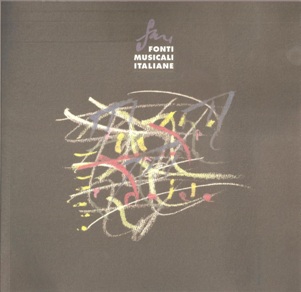Un episodio di storia della tipografia musicale in Italia: il musicografo Ferretto
Abstract
Il saggio si propone di portare alla luce l’originale quanto sfortunato tentativo compiuto da Andrea Ferretto (Barbarano Vic., 1864 – ivi, 1942), promettente musicista vicentino che, all’inizio del secolo scorso, progettò una particolare macchina per scrivere la musica cercando così di risolvere un annoso problema che aveva appassionato già diverse generazioni di appassionati inventori.
Il musicografo – questo il nome dell’ingegnoso congegno apparentemente simile ad una comune macchina da scrivere – era in grado, oltre che di fissare con estrema chiarezza le note, l’eventuale testo e la diversa varietà di segni grafici sul pentagramma, anche di trasportare immediatamente un pezzo in una qualsiasi tonalità semplificando non di poco, quindi, il lavoro del copista.
Esposta con successo in varie occasioni la macchina, grazie soprattutto alla semplicità d’uso e alla provata maneggevolezza, ottenne importanti riconoscimenti anche al di fuori dei confini nazionali – come riporta anche la copiosa documentazione citata in apparato allo stesso saggio. Tuttavia, nonostante l’impegno profuso dal suo creatore e l’appoggio incondizionato fornito dalle autorità governative fasciste, il musicografo – ostacolato, forse, dallo stesso tenace ostruzionismo dei rappresentanti del mondo editoriale – non riuscì ad attecchire e tornò così a giacere definitivamente nell’officina del suo sfortunato inventore.
*****
An episode in the history of music printing in Italy: Ferretto’s «musicografo»
The paper proposes to bring to light the innovative but unfortunate attempt of Andrea Ferretto (Barbarano Vic., 1864 – ibidem, 1942), a musician from Vicenza, who at the beginning of the last century designed a specific machine for writing music in an attempt to solve an age-old problem that had already baffled several generations of enthusiastic inventors.
The «musicografo» – as he called the ingenious device, apparently similar to an ordinary typewriter – was able, in addition to reproducing on the stave with great clarity notes, eventual text and a variety of graphic signs, also to transpose directly a piece of music in any key – thus simplifying considerably the work of the copyist.
Exhibited with success on various occasions, the machine – thanks above all to the simplicity of use and to the proven manageability – received favourable notices also beyond the national frontiers, as can also be seen in the wealth of technical reviews attached to this paper. Nevertheless, notwithstanding the unflagging efforts of its creator and the unconditional support of the Fascist governmental authorities, the «musicografo» did not succeed in catching on – due perhaps to persistent stonewalling by the publishing world – and so ended its days lying abandoned in the workshop of its unfortunate inventor.
Downloads
Published
Issue
Section
License
© CIDIM
Tutti i diritti riservati


